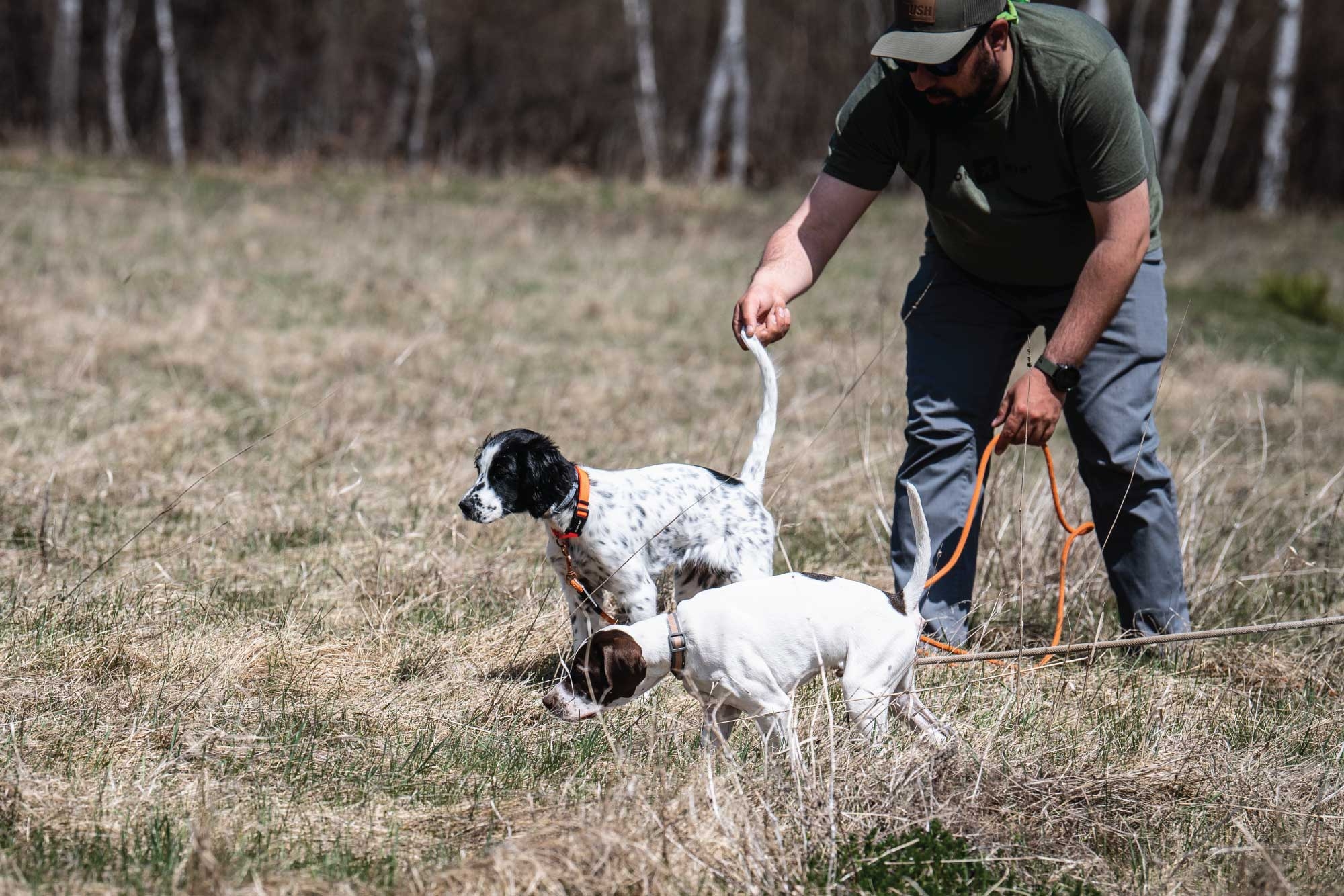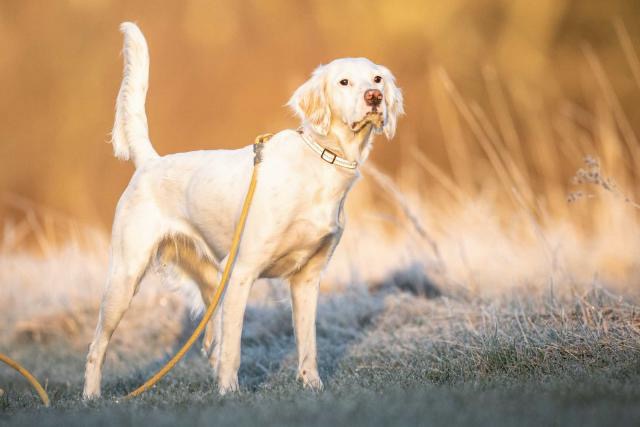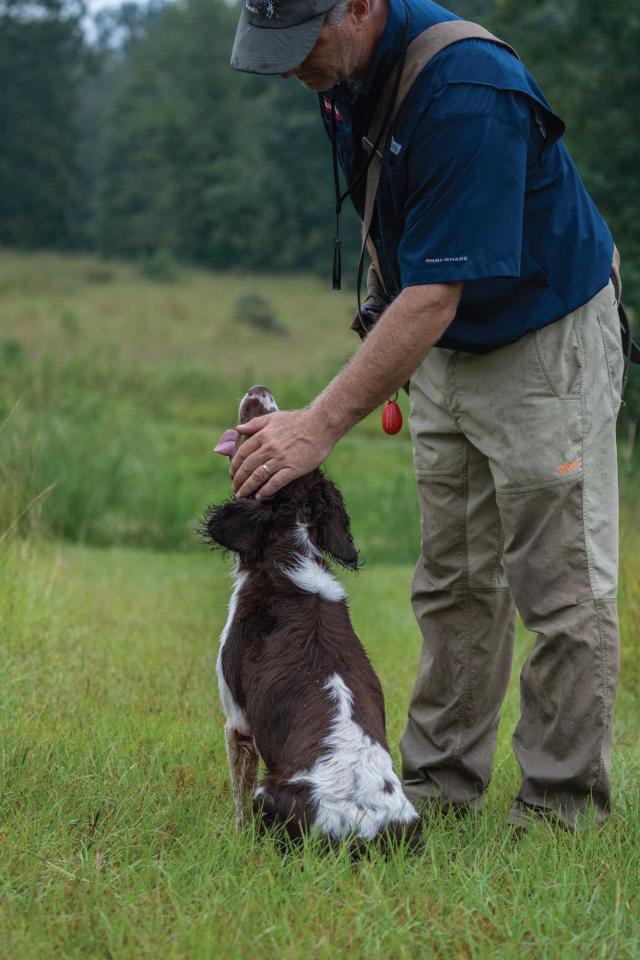Preseason Training Tips from the Pros – Part 2

Preseason training is a process, and we’re getting close to Opening Day. Here are some tips from Eukanuba™ Pro Trainers to get your dogs prepped for kickoff. It won’t be long before we’re all back in the woods and on the water where we belong.
This article is in partnership with Eukanuba™ Premium Performance Dry Dog Food
Preseason Training Tips from the Pros – Part 2
Preseason training is a process, and we’re getting close to Opening Day. Here are some tips from Eukanuba™ Pro Trainers to get your dogs prepped for kickoff. It won’t be long before we’re all back in the woods and on the water where we belong.
 Developing great gun dogs takes time. Regular sessions are key.
Developing great gun dogs takes time. Regular sessions are key.Brad Arington of Mossy Pond Retrievers, Georgia
Specialty: Breeding, training, and competing with Labrador retrievers.
- Keep it Real
Incorporating real-world elements into your training is important. Take your dog to the duck blind, take him on boat rides, and shoot live shells over him. If you only train in a manicured environment, your dog will be distracted by the aspects of the hunt he hasn’t seen since last season ended.
- Use Water to Your Advantage
If you live in a hot place that makes it tough to train, then focus on water work. Start a session by making your dog do a short 10-yard swim. Then, move on to things like casting into the wind and working in cover. The dog goes through the water, does his task, and comes back through the water. The water can help keep your dog cool in the heat while he’s training and conditioning.
- Break Your Training Habits
A good drill to steady a dog is to throw a bumper and make him wait to make the retrieve. Switch it up –5 minutes, 2 minutes, 10 seconds. Our dogs are creatures of habit, and if we send then immediately every time we throw a bumper, we are setting them up to break in the field. Switching it up will make your dog steadier and safer, and a pleasure to hunt with.
 Water work is great for conditioning on hot, humid days.
Water work is great for conditioning on hot, humid days.Mark Fulmer of Sarahsetter Kennels, South Carolina
Specialty: Training all breeds of pointing dogs, upland retrievers, and spaniels.
- Short and Sweet
Training sessions for young dogs should always be short. This allows them to focus on the command, have success, and stay interested in training. Several short sessions are much better than one long one.
- Back to Basics
Recall, heel, and whoa are the foundations of any well-trained dog. Some people think an older dog is beyond basic obedience training. Reinforcing those three commands will build a bond. Your dog will work with you, and you’ll be a team that works toward a common goal.
- Stay Positive
A handler’s attitude is so important to help a young dog to learn from his mistakes. Create a training environment that is fun for your dog and something he looks forward to, regardless of the dog’s age. This will go a long way toward creating a dog that loves to hunt. Keep it fun!
 Take your time and praise good behavior to help your gun dog rise to every challenge.
Take your time and praise good behavior to help your gun dog rise to every challenge.Chris Akin of Webb Footed Kennels, Arkansas
Specialty: Training and competing with Labrador retrievers.
- Don’t Overlook the Small Stuff
I’ve put my dog on a stand and made him watch me mow the yard. That might seem silly, but there are going to be days when there isn’t a lot of action, and the dog gets bored. They need to learn to sit still and be patient. People tend to overlook little things like that and train for the hunt, but that means they can overlook the stuff leading up to the hunt. The first time your dog rides in a boat shouldn’t be on the morning of Opening Day. You need to train a dog for the realities of hunting.
- Don’t Rely on “On-the-Job” Training
Think about the most basic commands a waterfowl dog needs to know—heel, sit, here, stay, and no. Now think about the things that a waterfowl dog needs to be comfortable with—water, gunfire, and birds. If you have a new dog, he needs to have a foundation with all those things before his first season. Don’t count on your dog learning everything he needs to know just from time in the field.
- Balance, Nutrition, and Conditioning
Every dog is different in terms of what is expected of him. Regardless of what we ask our dogs to do, we owe them quality nutrition to keep them healthy and energized. Make sure you are giving your dogs the energy and nutrients they need when they are working hard. And when the season ends, make sure you don’t overfeed.
 Performance food helps provide hard working gun dogs with the nutrition they need.
Performance food helps provide hard working gun dogs with the nutrition they need.Jared Moss of Best Gun Dogs, Utah
Specialty: Breeding and training German shorthaired pointers.
- Turn Weaknesses into Strengths
The preseason is the perfect time to think about last year and work with your dogs on the things they struggled with then. If you have a dog that was creeping on wild birds, work on his steadiness. If you have a dog that wouldn’t retrieve to hand, work on retrieving drills. Whatever your dog’s weakness was last year, make it a strength this year.
- Don’t Rush Your Dog
Many people want to see quick progress, but that just isn’t going to work with a lot of dogs. It takes repeated training sessions for a dog to understand a command, and many more for him to master it. I see too many dogs that were introduced to gunfire or live birds too quickly and get skittish when a firearm discharges. Take it slow, and make sure your dog is ready for the next step before you move on in your training process.
- Safety First
If you can’t keep your dog off a country road, or keep him away from a porcupine, this can lead to a really bad day. That’s why recall is the most useful command for keeping our dogs safe. When a dog is hunting he’s emotional and excited. This can lead to him ignoring commands and hunting for himself. The dog’s ability to recall must be solid, and that should be achieved before the season begins.
 Setting realistic goals is important for all dogs, and especially for puppies.
Setting realistic goals is important for all dogs, and especially for puppies.Bob Owens of Lone Duck Outfitters, New York State
Specialty: Breeding, training, and competing with Labrador and golden retrievers.
- Keep It Fun
On a dog’s first hunt, you are trying to take everything they’ve learned during their summer training and translate it to the hunt. We want to make that transition as simple and as much fun as possible. Bring a reward like Eukanuba™’s ACTIVTRAINER treats and toss one to a dog when he does well on a retrieve. I’ll also toss a bumper in my blind bag and throw it for the dog to give him some fun if the hunting is slow.
- Avoid a Barrage of Gunfire
A lot of people introduce their dogs to gunfire over the summer. But there is a big difference between one or two shots going off and a barrage of gunfire from six shooters that sounds like a war zone. For a dog’s first hunt, bring one or two friends and leave your gun at home. Your job is to manage and teach the dog.
- Don’t Quit Your Dog
A lot of people will train dogs hard for their first few seasons, but once the dog starts performing well, they quit training. Don’t do this. For one thing, training keeps a dog in good condition for hunting season. For another, even basic obedience can become a problem when a dog has had nine months waiting for hunting season and then starts seeing action again.
Tom Keer is an award-winning writer and regular contributor to over a dozen magazines and blogs. His favorite time of year is in October and November where you can find him in woodcock and grouse coverts or quail fields with his wife, two kids, and three English setters. Visit him at www.tomkeer.com or at www.thekeergroup.com.
Useful resources:
Preseason Training Tips from the Pros – Part 1
Preseason Training Tips from the Pros – Final
The Eukanuba Sporting Dog web site

Tom Keer is an award-winning writer and regular contributor to over a dozen magazines and blogs. His favorite time of year is in October and November where you can find him in woodcock and grouse coverts or quail fields with his wife, two kids, and three English setters. Visit him at www.tomkeer.com or at www.thekeergroup.com.


Comments